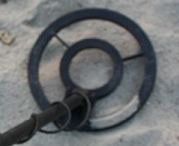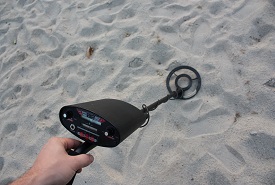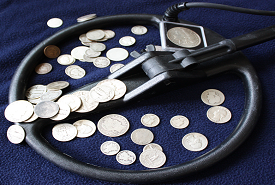Are you interested in the hobby of metal detecting? Or maybe you just picked up a metal detector and you have no clue what to do? Let me see if I can help!

Lets start with the basics of any metal detector so you can learn how to metal detect. When you first look at your machine you will notice a control box near where your hand is when you pick it up. This controls all the functions of the metal detector. Different models provide different features. Here is an example of the “face” of the control box. Notice all the buttons. The most important buttons are sensitivity and discrimination. In basic terms, the sensitivity controls how hard the detector is going to work to find objects in the ground. Higher sensitivity may produce better depth but it may also act erratically if there are too many conductive minerals in the ground. Generally, start with sensitivity at the half way position. Discrimination is what the detector will pick up or ignore. The higher the discrimination to more targets are ignored. These are usually grouped based on the type of metal.

That funny looking circle on the end of the detector is known as the “coil”. The coil is what picks up the targets and sends information back to the control box. Coils come in different shapes and sizes. Typically the larger the coil the more surface area you can cover but it will be hard to determine where the target is when you do find something. Smaller coils or “sniper coils” are for difficult areas that have lots of trash and you need to pick and choose targets wisely.
Next component of the metal detector is the shaft. This is so you can hold the controls by your hand and the coil is near the ground. Shafts can usually be broken down into two pieces for easy storage. Also you have to connect the coil of the detector to the control box by wrapping the cord around the shaft. If it important that you have a snug fit as the cord can get snagged and cause damage to your detector.
Proper technique involves swinging the metal detector back and forth in a smooth motion. Slower is better but you will develop a rhythm as you move forward swinging the detector. Also, keep the coil as close to the ground as possible. The higher up you are from the ground the less depth you will get. When you do hear that wonderful “beep” telling you that there is a target underneath, swing the detector over the target multiple times making sure you get the same consistent response over time. This insures you have a good solid target. If the target comes up as different tones dig it anyway, its good practice. I like to guess what the target is before I dig it up, its a nice challenge and helps you memorize the different tones/target identification your detectors makes.
Location, Location, Location



